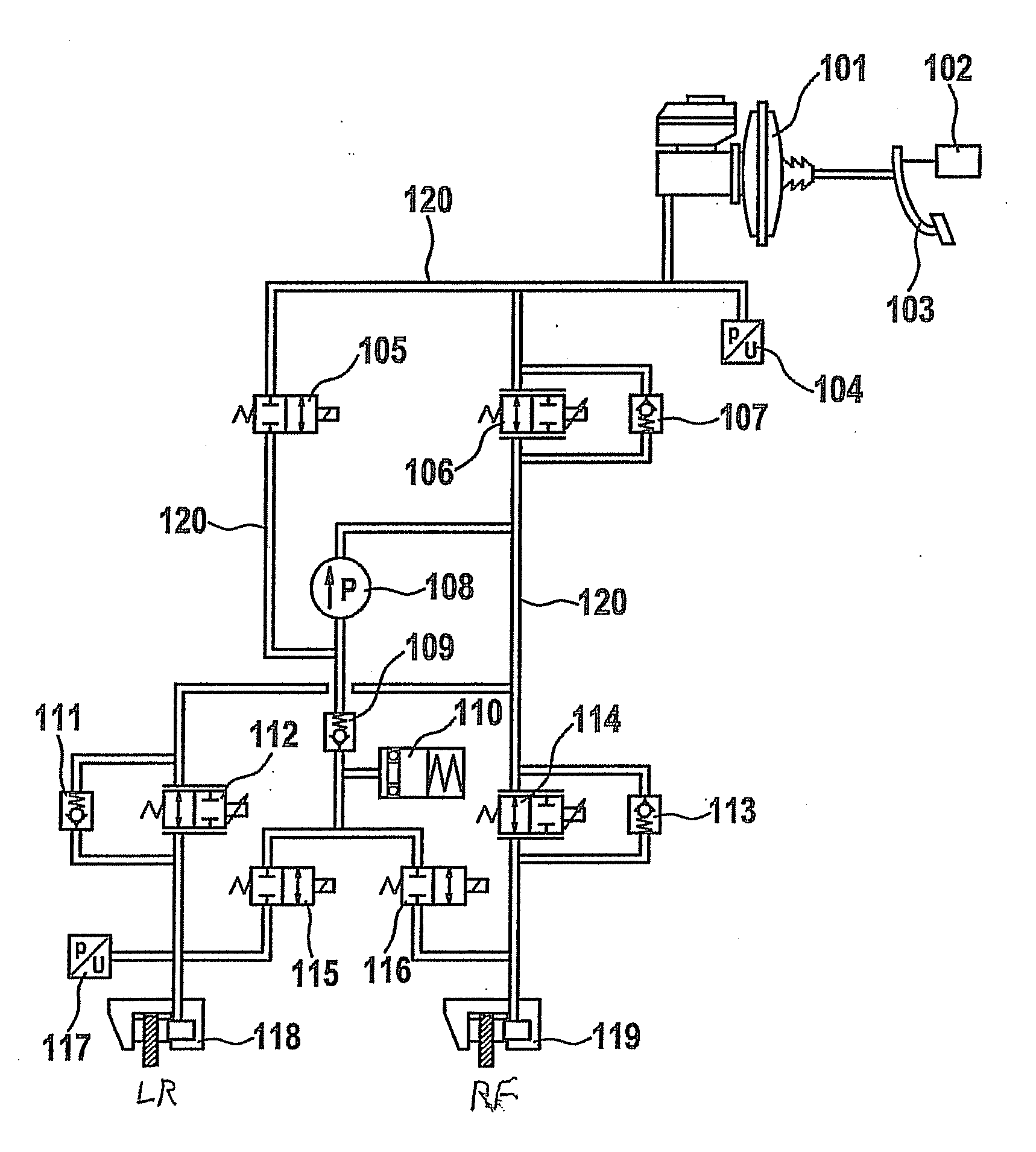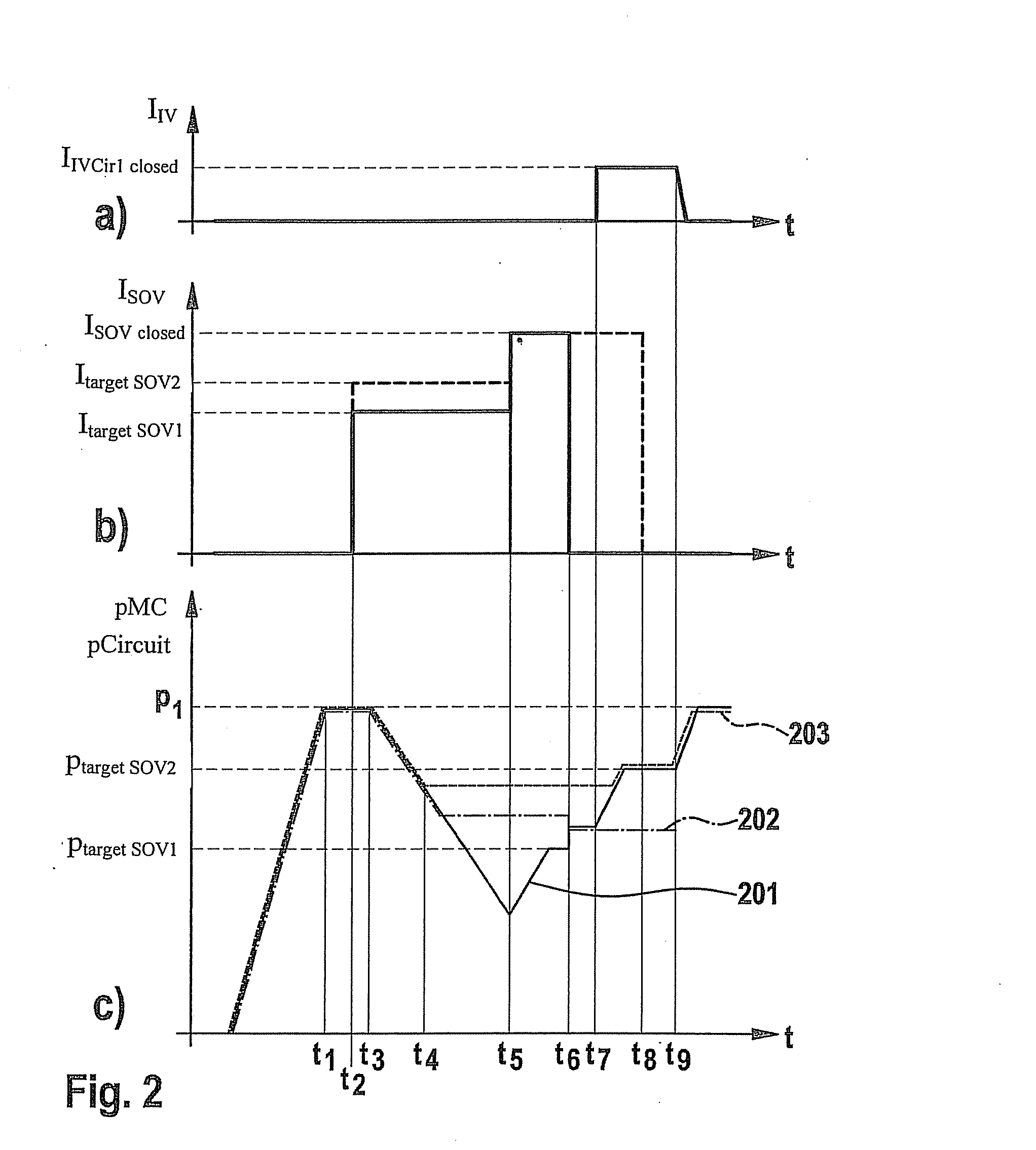Method and device for determining and balancing the working point of valves in a hydraulic system
a technology of hydraulic system and working point, which is applied in the direction of water supply installation, braking system, instruments, etc., can solve the problems of critical situations in vehicle dynamics, vehicle oversteering behavior, and vehicle tending to become unstable, so as to reduce the pressure rise, accurate over-energizing of the closed valve, and the effect of power dissipation
- Summary
- Abstract
- Description
- Claims
- Application Information
AI Technical Summary
Benefits of technology
Problems solved by technology
Method used
Image
Examples
Embodiment Construction
[0033]FIG. 1 is a block diagram of a hydraulic brake system of a vehicle in which the hydraulic brake system is split in known fashion into two circuits, only the first circuit being depicted here. The circuit serves to actuate the brakes of the left rear wheel LR and right front wheel RF of the vehicle. In the present case, a vehicle having four wheels is assumed. If more than four wheels are present, they either can be referred to the double-circuit braking system as illustrated in FIG. 1, or more than two independent brake circuits can be present. The hydraulic system is connected to a double-circuit main brake cylinder 101 that encompasses one or two independent master cylinders that can be actuated by a brake pedal 103. Brake pedal 103 additionally applies control to a brake light switch 102. The mutually independent brake cylinders are described below using the example of the first brake circuit, the second brake cylinder being of identical construction.
[0034]The first brake c...
PUM
 Login to View More
Login to View More Abstract
Description
Claims
Application Information
 Login to View More
Login to View More - R&D
- Intellectual Property
- Life Sciences
- Materials
- Tech Scout
- Unparalleled Data Quality
- Higher Quality Content
- 60% Fewer Hallucinations
Browse by: Latest US Patents, China's latest patents, Technical Efficacy Thesaurus, Application Domain, Technology Topic, Popular Technical Reports.
© 2025 PatSnap. All rights reserved.Legal|Privacy policy|Modern Slavery Act Transparency Statement|Sitemap|About US| Contact US: help@patsnap.com



